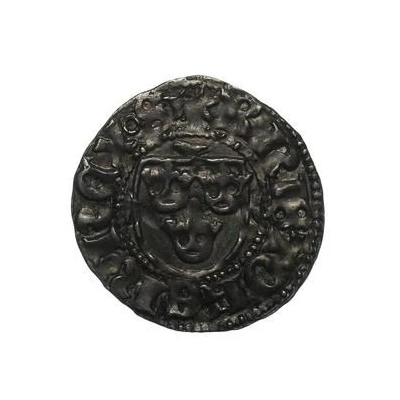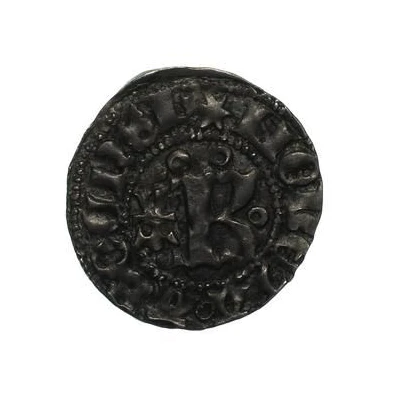


© Stacks Bowers
1 Örtug - Karl Knutssen Bonde Åbo ND
| Silver | 1.45 g | 20 mm |
| Issuer | Sweden |
|---|---|
| King | Charles VIII (1448-1470) |
| Type | Standard circulation coin |
| Years | 1448-1470 |
| Value | 1 Örtug |
| Currency | Örtug coinage (1364-1521) |
| Composition | Silver |
| Weight | 1.45 g |
| Diameter | 20 mm |
| Shape | Round (irregular) |
| Technique | Hammered |
| Demonetized | Yes |
| Updated | 2024-10-07 |
| Numista | N#152884 |
|---|---|
| Rarity index | 93% |
Reverse
Shield with the Three Crowns of Sweden over a cross all inside a beaded circle. Legend outside cut in four parts by cross arms.
Script: Latin (uncial)
Lettering: HON | ETA | ABO | ENS
Lettering (regular font): HON | ETA | ABO | ENS
Translation: Coinage of Turku.
Comment
The coins struck at Åbo, nowadays the city of Turku, were some of the first coins struck in Finland. With Finland being part of the Swedish Kingdom, the coins were most likely meant to circulate within the entire kingdom; however, there has been some disputes saying these coins were actually local issues of Turku. Even so, more evidence in needed to support that claim.Interesting fact
One interesting fact about the 1 Örtug - Karl Knutssen Bonde (Åbo) ND (1448-1470) coin from Sweden is that it features a unique design element - a small hole in the center of the coin. This hole was intentionally added to the coin to signify that it was made of pure silver, as silver was a highly valued metal at the time. The hole was also used as a way to test the authenticity of the coin, as it was difficult to counterfeit a coin with a small hole in the center. This feature makes the 1 Örtug coin stand out from other coins of its time and adds to its historical significance.

